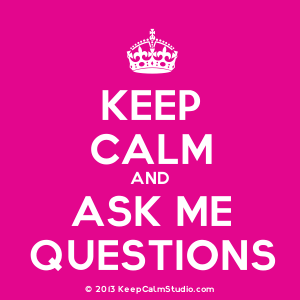
About a month ago I posted a story about the Role of Science in the work of a coach. The Role topic dealt with the Sport Science side of science. This post is concerned with a different side of science, the elemental aspect of science itself. What I’m referring to as elemental science is the scientific method and the application of scientific principles and practices to coaching. That is, coaching like a scientist.
There are 3 different ways that science gets involved with coaching.
- The science related to technical area being coached;
- The science related to the methods and practices of coaching, and now;
- The scientific method and practices that can be used in active coaching.
Why would you Coach with Science?
When you look at it closely, coaching lends itself to the scientific method and practices quite easily. The decision to apply any coaching development method is almost never based on absolute truth and knowledge. It is almost always a best guess. The coaching decision is based on a theory or hypothesis about what method will generate the desired development. Applying the method will result in a testable and measurable outcome. The outcome will then confirm or refute the hypothesis and the cycle of experimentation starts again.
This cycle of hypothesis development and subsequent experimentation can be easily applied to all levels of coaching from Long-range planning through season plans, periodization cycles right down to individual training sessions. The benefits of using science as your basis for coaching are many and of significant value. Here are some of the benefits of coaching with science:
- All coaching is done using standardised, repeatable process;
- The process adapts perfectly to the individual variations between athletes;
- The process maximises responsiveness to change;
- Incorrect hypotheses are exposed early;
- Correct hypotheses are confirmed and can be built upon to create development programs of increasing effectiveness;
- The process is transparent and can be validated externally and independently;
- All support providers; assistants, medical, biomechanics, sport science and others can understand and learn the process in a short period of time and apply it to their work as well;
How does Coaching with Science work?
 The process is simple:
The process is simple:
- Develop a hypothesis;
- Create an experiment to test the hypothesis;
- Run the experiment and collect relevant information;
- Analyse the information;
- Determine the conclusion;
- Based on the conclusion, develop a new hypothesis.
Here’s what it looks like in practice for an Annual Training Plan:
- Hypothesis: The athlete will gain usable speed through the mid portion of the event by increasing core strength supported by biomechanical analysis and technical development to allow effective use of the anatomical changes.
- Experiment: Apply a movement specific core strength program over 12 weeks monitored bi-weekly by biomechanical analysis to identify changes and adaptive adjustments.
- Information collection and Analysis: Use daily training records, results of periodic performance tests and basic statistical methods to determine the probability of observed changes being attributable to the change program.
- Conclusion: Judge whether the chosen program has proven or refuted the Hypothesis.
- New Hypothesis: Based on the X% improvement in mid event speed the indication is that the athlete will make further performance gains by extending the strength program for a further 6 weeks.
Here’s what the process looks like for a Meso (4 week) Cycle:
- Hypothesis: That the athlete will be able to support an increase of 5% in training intensity without a significant deterioration of performance or requirement for excess recovery time.
- Experiment: Increase training intensity by 5% for 1 week with an evaluation of training fitness before and after the training period and observation by the athlete and coach of performance effectiveness. This will be followed by a rest week then a repeat of the intensity week.
- Information collection and Analysis: Review both pre and both post week evaluations for signs of maladaptation or accumulation of fatigue and review the coach/athlete observations for signs of performance degradation.
- Conclusion: Judge whether there are sufficient indications that the athlete was able to adjust to the increase in training intensity to prove or refute the Hypothesis.
- New Hypothesis: Based on Conclusion the athlete can/can’t manage an increase in training intensity at this time. The athlete will be able to support an increase in training load at the existing/new level of training intensity.
As you can see these experiments are not complex and they probably don’t vary much from your current practice except for the discipline of following the process and documenting the results and analysis. It will most likely be the case that multiple experiments will be run simultaneously.
As you can see, these experiments are highly individual. There is little value in attempting to run these experiments across multiple individual athletes. Our process as coaches is not robust enough to support this level of scientific experimentation. We should leave that to the scientists who apply the methods with far more rigor than we do.
What is the best time to start Coaching with Science?
Now is as good a time as any. Start small and start simple. Document everything that you can. Treat working with science as an experiment in itself. You may need to run a few experiments based on adjusting your theory about how you can make this happen. No problem with that. You will just gain experience that will be useful in making this program part of what you do.
One of the best things about using the scientific method as your basis for coaching is that we’re surrounded by scientists. They will be happy to provide useful assistance in getting your science-based coaching program going. It will also mean that you understand their work better.
And that is a good thing.

